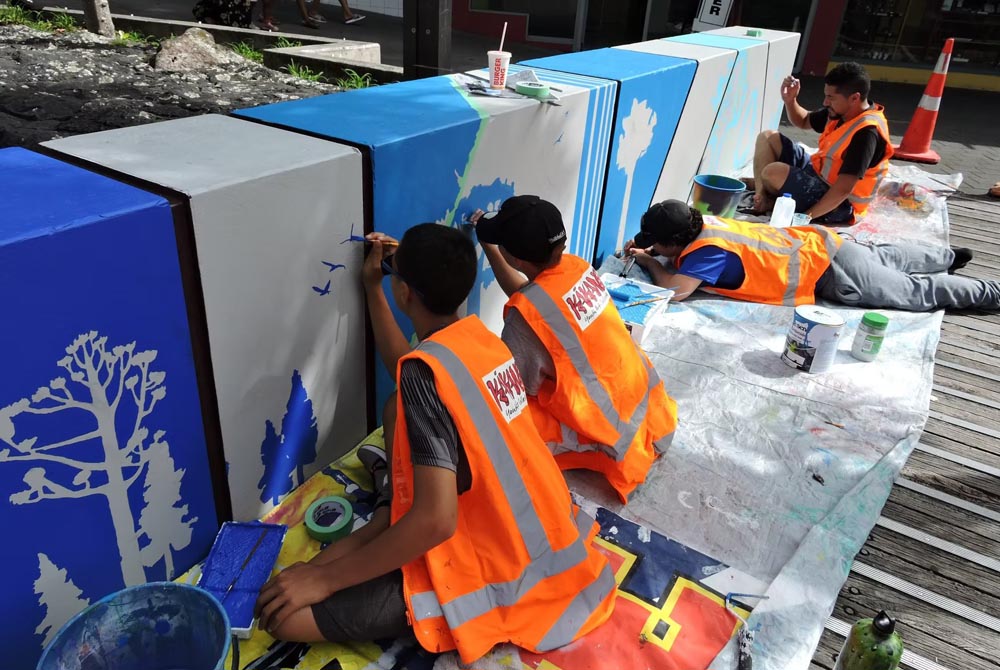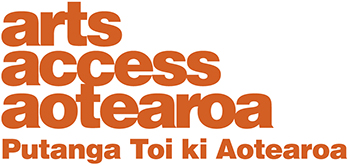There’s significant evidence here in Aotearoa and internationally showing the difference that participating in arts and culture makes to health and wellbeing. This applies across individual, community and societal levels and includes prevention, health promotion, treatment and management.
 sm.jpg) Given this evidence, why do organisations such as creative spaces – providing specialist arts, health and wellbeing opportunities – still struggle for adequate and sustainable resourcing?
Given this evidence, why do organisations such as creative spaces – providing specialist arts, health and wellbeing opportunities – still struggle for adequate and sustainable resourcing?
Surely something needs to shift.
After completing my theatre degree, I worked in London for theatres and arts organisations, setting up education and outreach programmes with many different communities. Nothing in my degree had prepared me for the challenges of how those projects – and often my job – were funded.
I could see that funding relationships and systems shaped how we worked but I couldn’t fully explain how.
That led me to study the interrelationship between funding, policy and practice in applied theatre and other community-based arts practice through my masters degree and PhD.
I wanted to move beyond identifying problems to finding solutions. This remains an area of research I feel passionate about so being able to speak on this topic at the Shifting the Stream forum in Tāmaki Makaurau was a privilege.
Both+and thinking needed
One thing we need if we’re going to change the current funding landscape is a bit more “both+and thinking”.
Both+and thinking is essential to recognising and understanding the value of creative spaces. It means being open to the potential that emerges when we allow two or more things to co-exist and intersect.
This sounds simple but it requires resisting familiar habits of thought that have shaped arts funding for too long. This includes:
- Mutually exclusive thinking – believing something can only be this or that. Reducing complex work to one box strips away its meaning.
- Zero-sum thinking – assuming that if one person gains, another must lose. This fuels competition instead of collaboration.
- Us-against-them thinking – overstating how different or superior our own work or values are.
Creative spaces are specialists in both+and practice. They bring together one or more artforms with one or more social or health practices to meet the needs and aspirations of specific communities.
Youth arts practice in Aotearoa
Our research into Auckland youth arts through the Creating Change project found that youth arts practice in Aotearoa often brings together Western arts, emerging youth culture, ngā toi Māori and other locally relevant creative expression.
 It values both artistic exploration and social objectives, both process and outcome, both creative and personal development.
It values both artistic exploration and social objectives, both process and outcome, both creative and personal development.
In these both+and practices, every part is integral. You can’t take the arts out and achieve the same results.
Research now backs this up. The design, content and environment of an arts activity – along with how participants engage and interact – directly affect health and wellbeing outcomes. Health researcher Daisy Fancourt explains:
“Some of these ingredients are quite common to other activities … but the arts specifically have other ingredients that are more strongly expressed, and those are things like creativity, imagination, multi-sensory stimulation, aesthetics or beauty as well.”
Falling through cracks in the funding landscape
Because of their both+and nature, however, creative spaces often fall through the cracks in the funding landscape. Funding typically focuses on either the arts or health and wellbeing. This can make creative spaces ineligible for some funding or force them to frame their work narrowly to fit criteria, creating tension and instability.
 sm.jpg) Stable funding is scarce but critical, and research shows it is essential for quality practice and safe delivery. Losing funding can have serious consequences for participants’ wellbeing and sense of identity.
Stable funding is scarce but critical, and research shows it is essential for quality practice and safe delivery. Losing funding can have serious consequences for participants’ wellbeing and sense of identity.
Long-term funding matters. Arts Access Aotearoa’s evaluation of the three-year CARE funding from Manatū Taonga found that multi-year support led to clear social benefits: more staff employment and professional development, stronger strategic partnerships and deeper community connections.
The evaluation demonstrates what can be achieved with a bit more both+and thinking.
In addition to the importance of sustainable funding, evidence points to what helps when you’re funding arts for health and wellbeing. For example:
- funding that recognises and supports the aims, values and kaupapa of the practice
- quality, respectful relationships between funders and practitioners
- flexibility
- strengths-based and mana-enhancing approaches
- responsiveness to Indigenous practices and aspirations
- collaboration between funders
- participatory and place-based funding schemes addressing barriers to equitable arts access.
It’s exciting to be part of a moment when the streams are shifting – to see both+and thinking emerging. Thinking, I believe, that will lead to positive change.
Dr Molly Mullen works at Te Pūtahi Mātauranga | Faculty of Arts and Education, Waipapa Taumata Rau | University of Auckland. She was the keynote speaker at Shifting the stream: rethinking arts investment, a forum organised by Arts Access Aotearoa and funded by Auckland Council.





